Persicaria longiseta
Asian smartweed of open spaces with long bristles on the sheaths
Persicaria longiseta bristly lady's-thumb
Add to MyPlants View Locations
This plant is one of the more common in Western Pennsylvania, though it is an import from Asia. At the sheaths on the stem there are long bristles or fringes running parallel to the stem. The flower spikes are also fairly narrow—only about ¼ inch across. Each individual flower is only about 1/8 inch wide. The calyx has five parts but there are no petals. The leaves are up to 3 inches long, elliptical to lance-shaped. The fruit is a black 3-sided seed-like structure.
Bristly lady's thumb is an annual plant, growing each season from seed. It is common on roadsides or wet areas and is found in much of northeastern United States. It blooms from June to October. It is easily mistaken for the native Pennsylvania smartweed (P. pensylvanicum) that lacks the node bristles. Also similar is lady’s thumb, (P. maculosa) that has V-shaped red markings on the leaves. There is also the swamp smartweed (P. amphibia) that has variable aquatic and terrestrial forms, but is usually larger than other smartweeds.
Habitat & Range
Common in woods, fields, and wasteground.
Present throughout the state.
| EMP: | FAC |
|---|---|
| NCNE: | FAC |
Phenology
Flowers June to October.
Persicaria longiseta bristly lady's-thumb
Synonyms: Polygonum caespitosum var. caespitosum, Polygonum caespitosum var. longisetumAdd to MyPlants View Locations
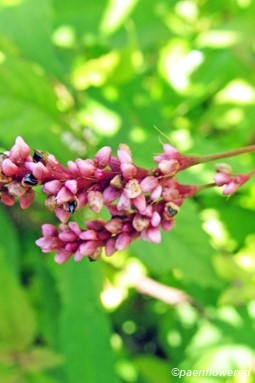
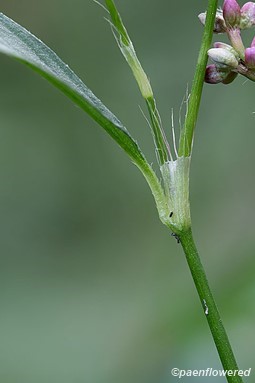
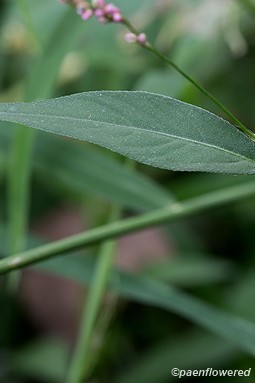
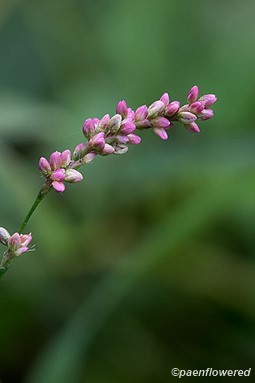
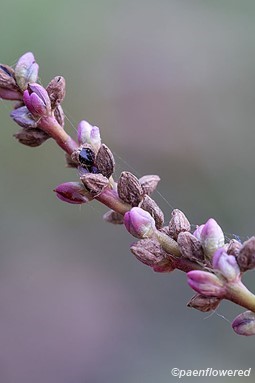








.JPG?v=638217088360000000)

.jpg?v=638921765700000000)

Comments
Have you spotted this plant in your area? We'd love to hear about your experience! Share your comments or questions about the plant below. Comments are moderated before posting.